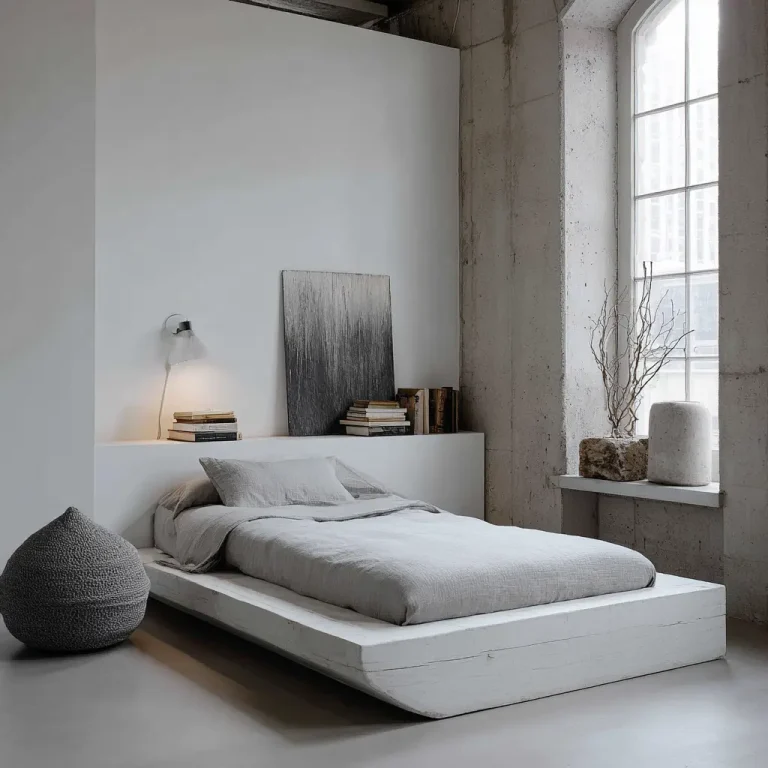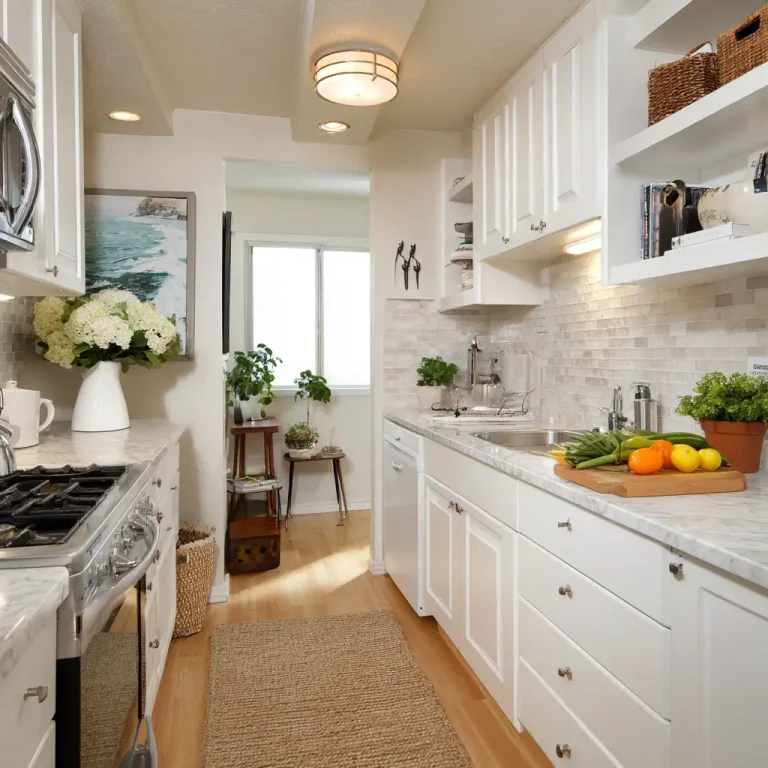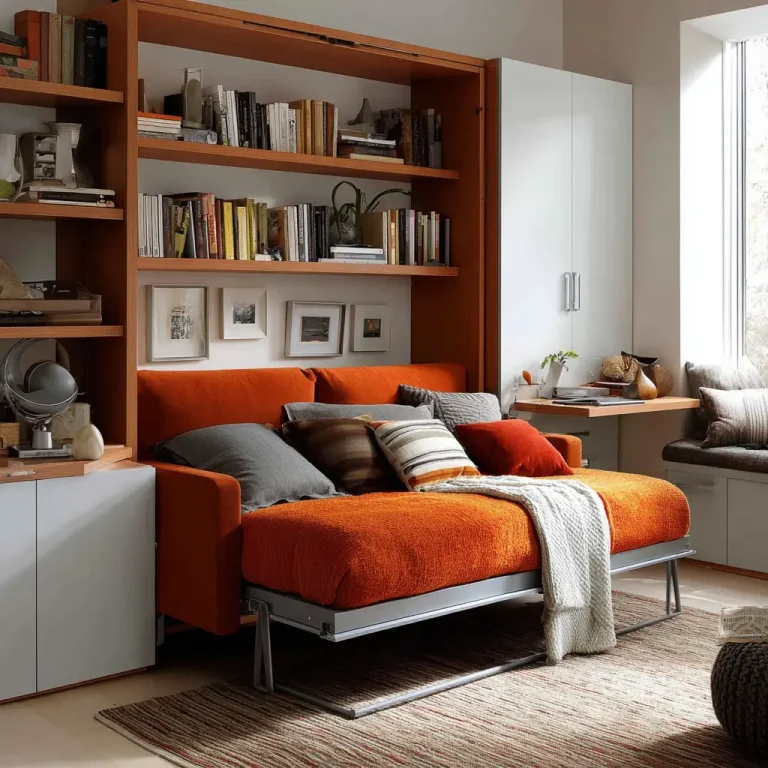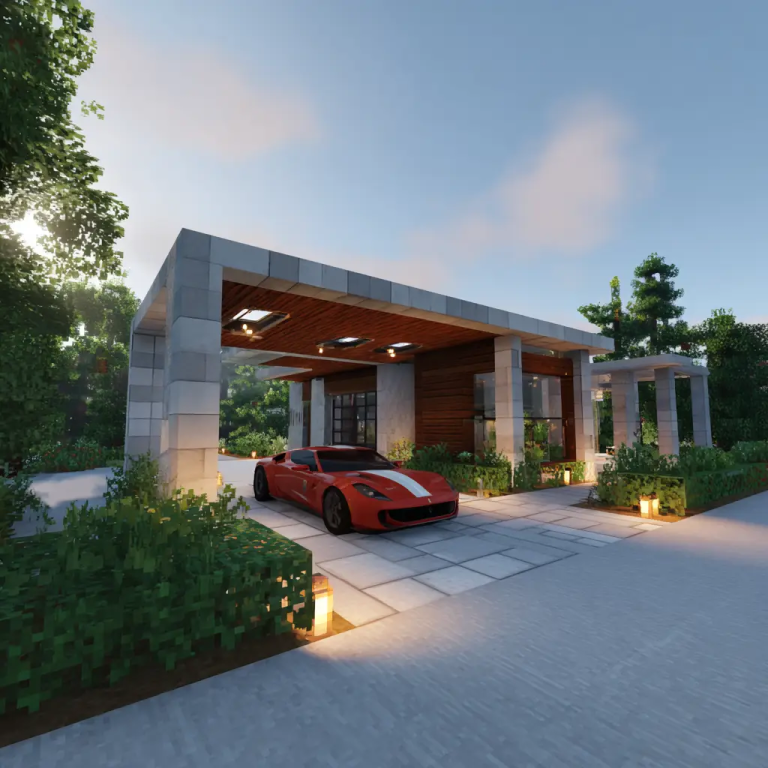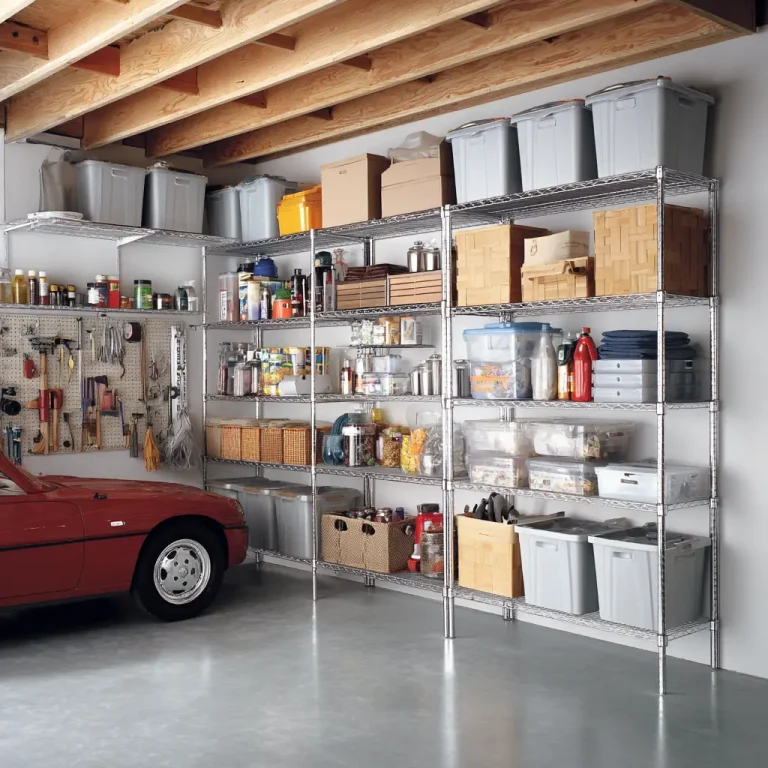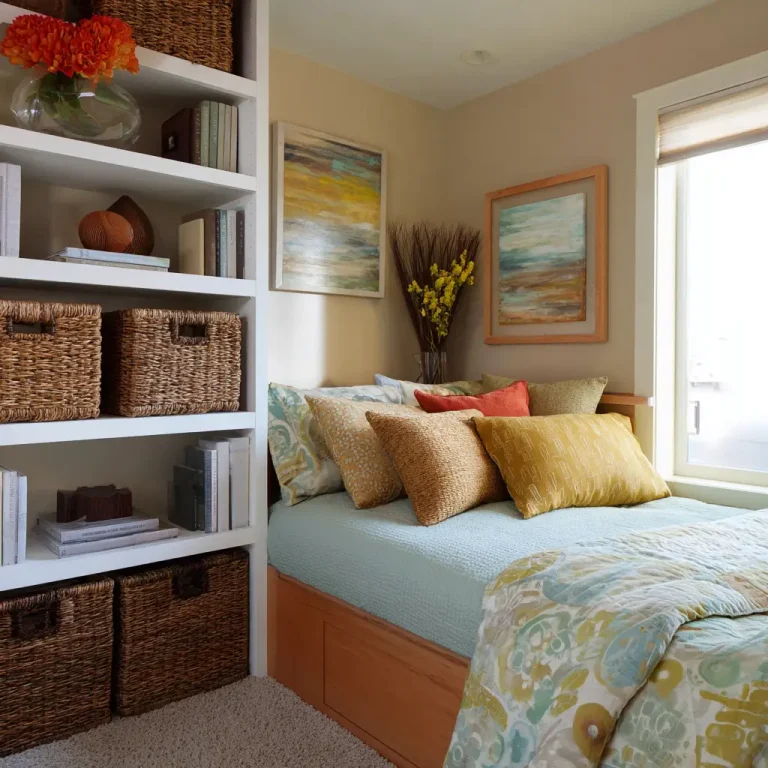20 Garage Hangout Ideas DIY Fun Kids
multifunctional area that encourages creativity, learning, and fun—all within the comfort of your home. Whether you want a place for after-school play, rainy day activities, or weekend bonding time, the garage offers flexibility and space you might not have inside your house. Plus, involving your kids in the setup process makes it more personal and exciting for them.

1. Craft Corner
A craft corner can become the heart of creativity in your garage. Set up a kid-sized table with washable surfaces, and add drawers or storage bins filled with paper, glue, stickers, stamps, beads, and recycled materials like cardboard tubes and bottle caps. Consider using a pegboard to hang commonly used items like scissors and tape so they’re easy to grab. Add a small trash bin and cleaning supplies nearby to promote responsibility and clean-up habits after crafting. It’s a perfect setup for solo projects or playdates.
2. Reading Nook
Encouraging reading is always a win, and a cozy nook can help even reluctant readers engage with books. Place a small bookshelf filled with age-appropriate titles, magazines, and picture books. Add large bean bags, soft throw pillows, and a rug to create an inviting space. String up fairy lights or a small lamp for a warm, relaxing glow. You could even add a theme—like an outer space or jungle motif—to make it feel like a tiny escape. A little tent or canopy adds an extra magical touch.

3. Mini Arcade
If you’ve got kids who love gaming or retro fun, a DIY arcade can be a dream come true. Repurpose or refurbish old gaming consoles, tablets, or mini arcade machines and set them up on sturdy tables. Add posters of classic video games and maybe even a scoreboard for friendly competitions. Consider a corner for tabletop games or even DIY pinball. Keep a timer handy to help manage screen time, and throw in some comfy stools or bean bags for a complete arcade vibe.

4. DIY Movie Theater
A garage movie theater is easier than it sounds. Mount a projector screen or hang a white sheet against one wall. Use a portable projector and hook it up to a tablet or laptop. Layer the floor with sleeping bags, cushions, or inflatable chairs. Keep a snack tray nearby with popcorn, juice boxes, and simple treats. Decorate the space with string lights or blackout curtains to set the mood for a real cinematic experience. Add a movie schedule board for fun anticipation.

5. LEGO Building Zone
Designate a clear zone with a low table and storage drawers or bins sorted by brick color, size, or type. You can also mount magnetic or brick baseplates on the wall for vertical building fun. Add a chalkboard or whiteboard for planning their “city” or structure ideas. It’s an ideal spot for creative thinking and fine motor development. Plus, it keeps those tiny bricks contained in one place!

6. Mini Stage for Performances
Build a small stage with a wooden platform or even a large rug. Use a tension rod and curtains as a backdrop. Add a dress-up box nearby with costumes, props, and instruments. Kids can put on skits, puppet shows, or musical acts. This encourages public speaking, confidence, and imaginative play. You could even have a “family talent night” once a month to celebrate their creativity.
7. Chalkboard Wall
Paint a section of a wall with chalkboard paint and keep colored chalk within reach. Kids can draw, write stories, play word games, or work out math problems. It’s a flexible, reusable canvas that fosters creativity and learning. You can also use it for family messages, weekly schedules, or reminders.

8. Nerf Battle Arena
Convert a section of your garage into a safe Nerf zone using soft barriers like cardboard boxes, foam blocks, or pop-up tents. Designate clear boundaries and set safety rules. Use bins or wall hooks to store Nerf guns and darts. You can even hang up a scoreboard and rotate team captains. It’s perfect for rainy-day fun and a great energy release for active kids.
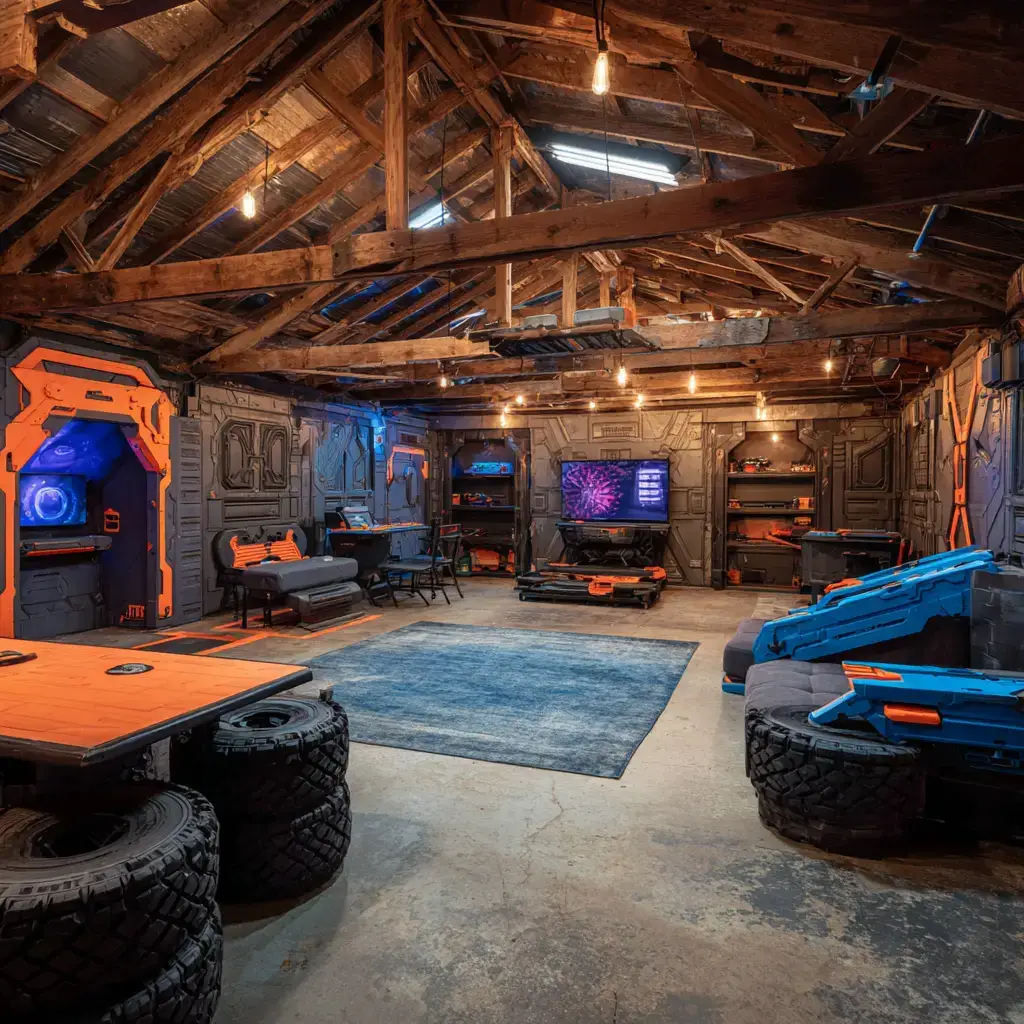
9. Science Lab Station
Use a sturdy table to hold magnifying glasses, microscopes, measuring cups, baking soda, vinegar, and other safe materials for experiments. Include laminated instruction sheets for DIY volcanoes, slime-making, or simple chemistry projects. Make sure to supervise and keep a cleanup station with paper towels, soap, and aprons. Encourage kids to take notes like real scientists.
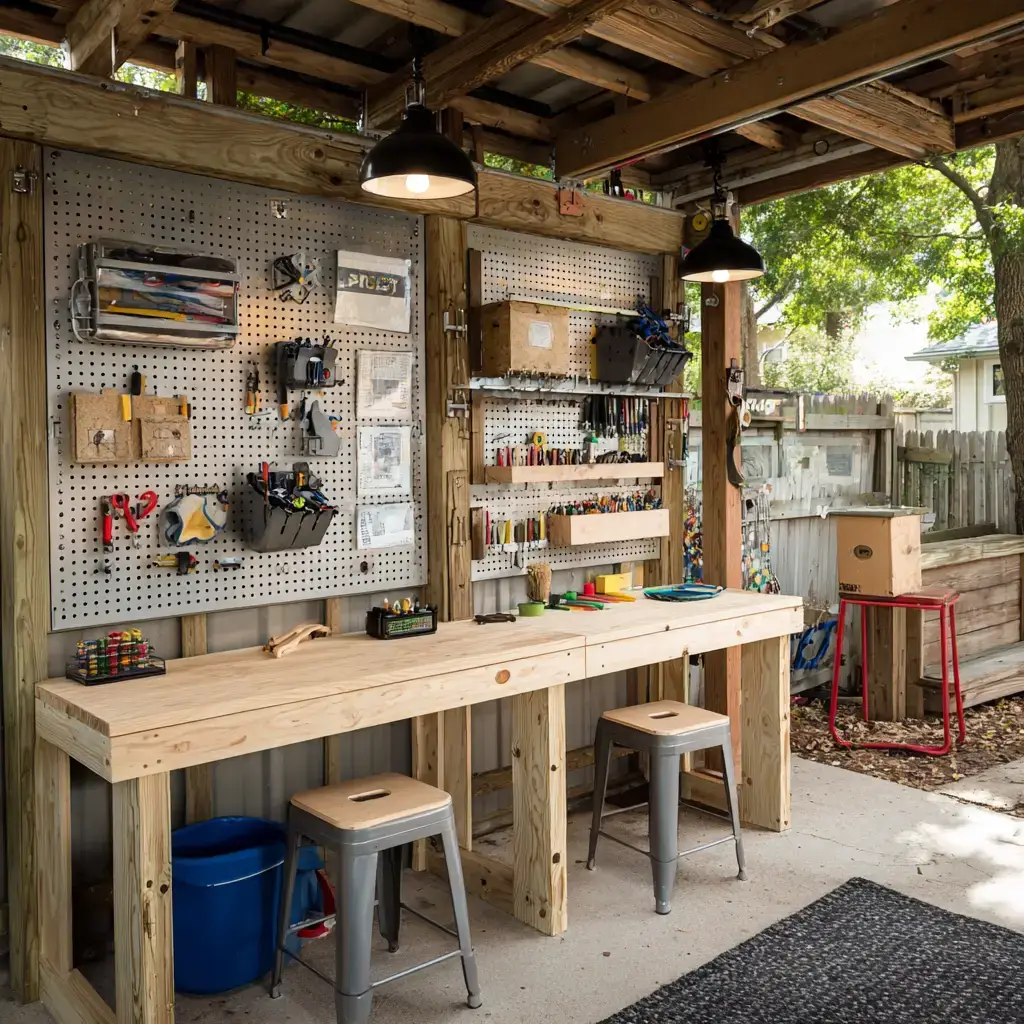
10. Indoor Obstacle Course
Use cones, hula hoops, jump ropes, balance beams, and tunnels to design a course. Tape lines on the floor for jumping or hopping. Rearrange the course weekly to keep things fresh and challenging. Add a timer and a wall chart to record personal bests. It’s great for building strength, coordination, and confidence.
11. Puzzle and Board Game Table
Use a folding table with comfortable chairs, and store classic games like Uno, Monopoly, and chess nearby. Stack puzzles of varying difficulty for all age levels. Rolling carts or bins make cleanup easy. It’s a great way to encourage family bonding and unplugged fun, especially on quiet afternoons or holidays.
12. Music and Jam Room
Set up a music area with small instruments like keyboards, bongo drums, maracas, and ukuleles. Add soundproofing pads or thick rugs to help muffle noise. Include music books or an app for tutorials. Encourage songwriting, musical games, or even recording performances with a phone or tablet.
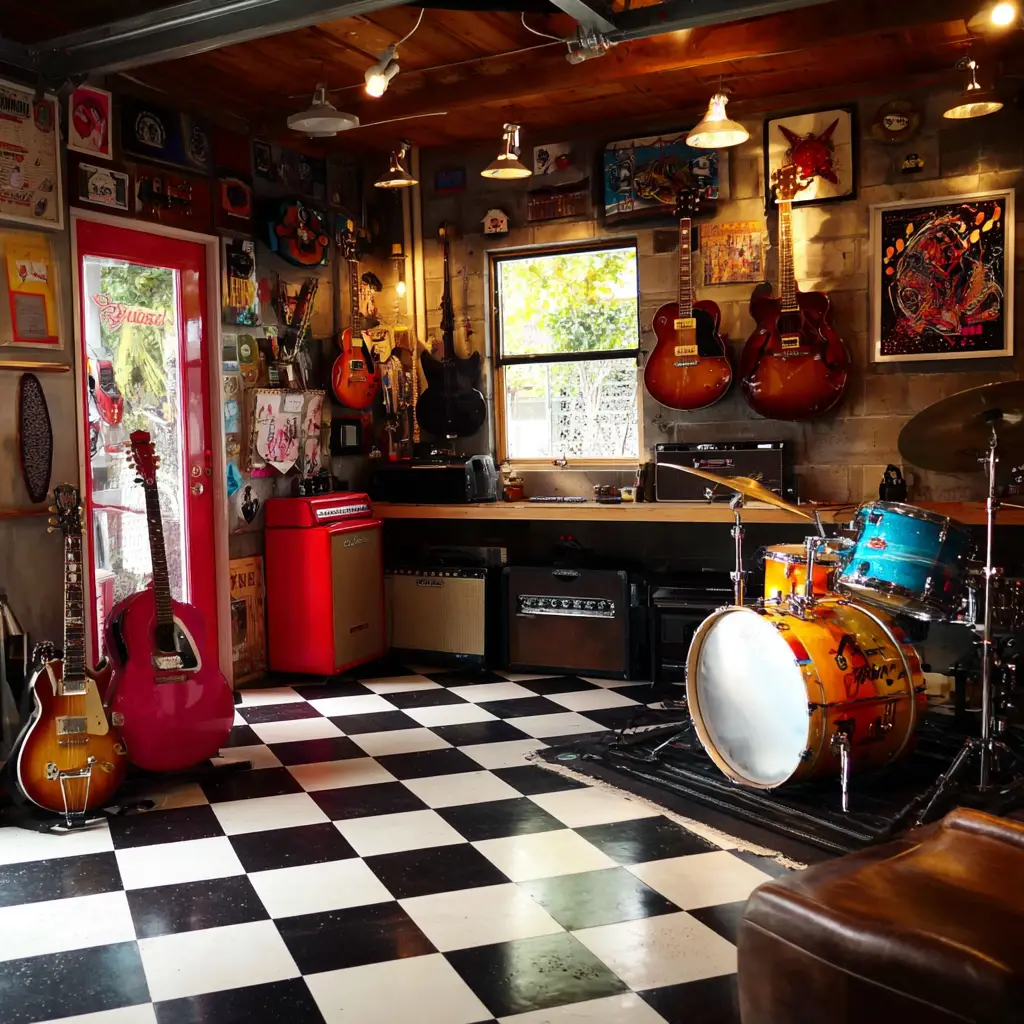
13. Art Gallery Wall
Display your child’s masterpieces on a rotating art wall using clipboards, strings with clothespins, or corkboards. Let them curate the “gallery” by choosing what goes up each week. Add name tags and dates like a real exhibit. You can even invite family over for an “art opening” to celebrate their creativity.
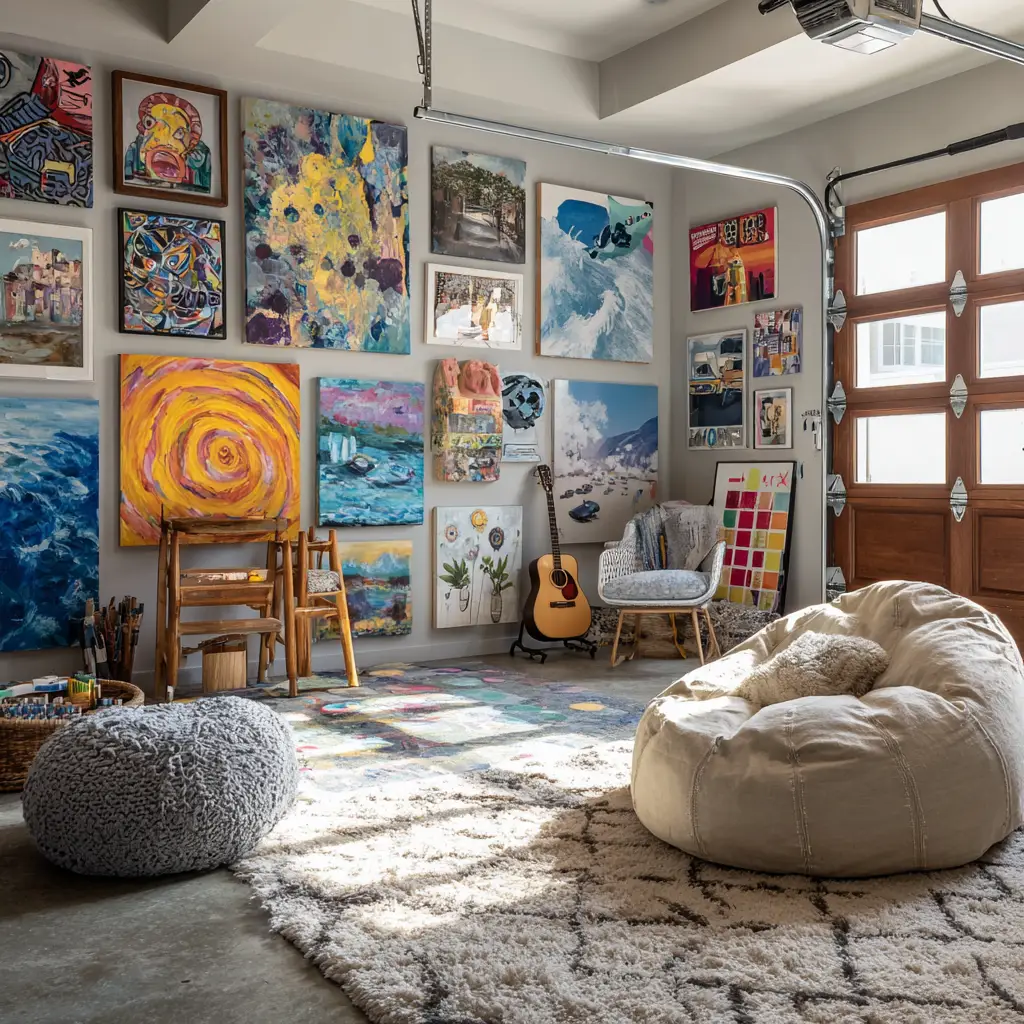
14. Building & Tinkering Station
Set up a safe, supervised zone with basic tools, nails, screws, wood scraps, and DIY kits. Older kids can build small shelves, birdhouses, or model cars. Always provide safety gear like goggles and gloves. Include a simple toolbox and a bench with a vice or clamp. This hands-on activity is perfect for developing problem-solving skills.
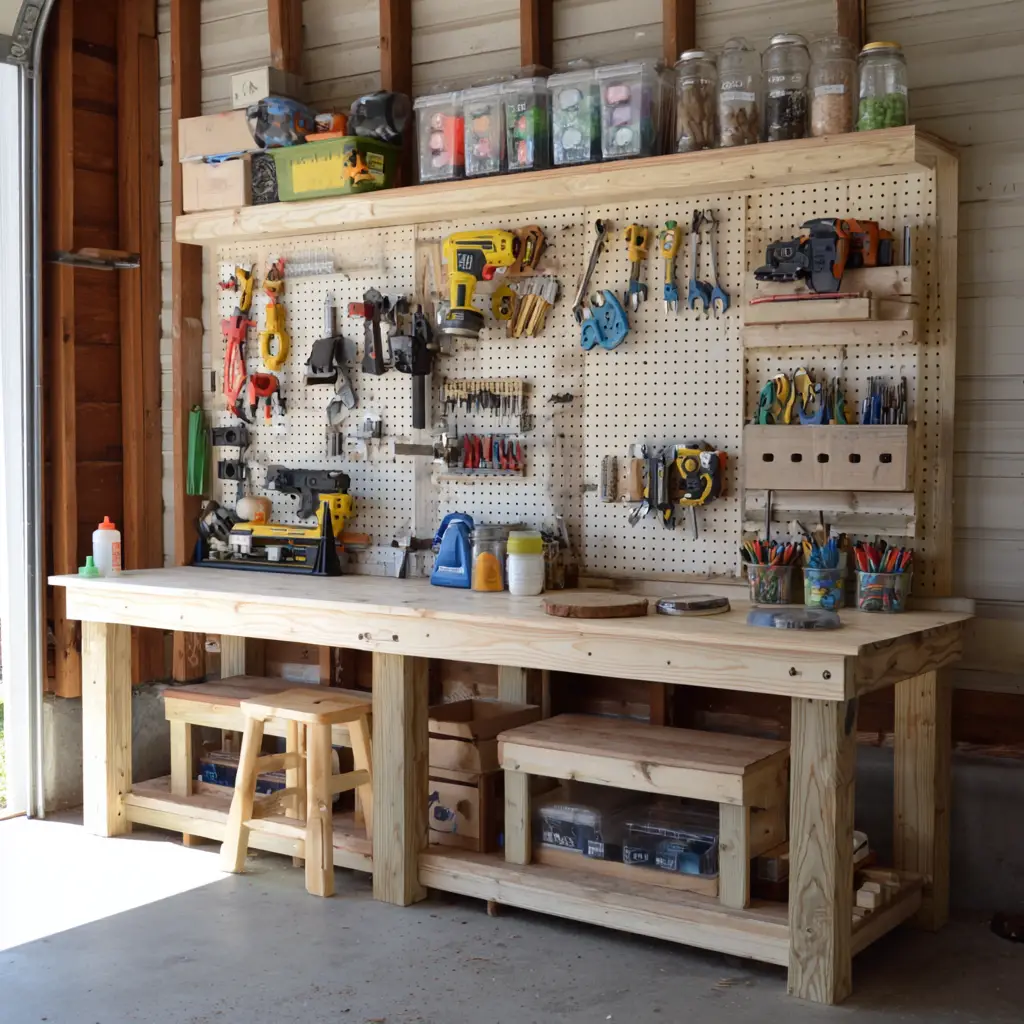
15. Gaming and Coding Hub
Create a tech corner with a laptop or tablet and access to child-friendly educational games or coding websites. Use Scratch, Tynker, or Minecraft Education to introduce them to programming concepts. Add a good desk chair and lighting. This kind of space is especially useful for older kids and teens who are ready for more focused screen time.
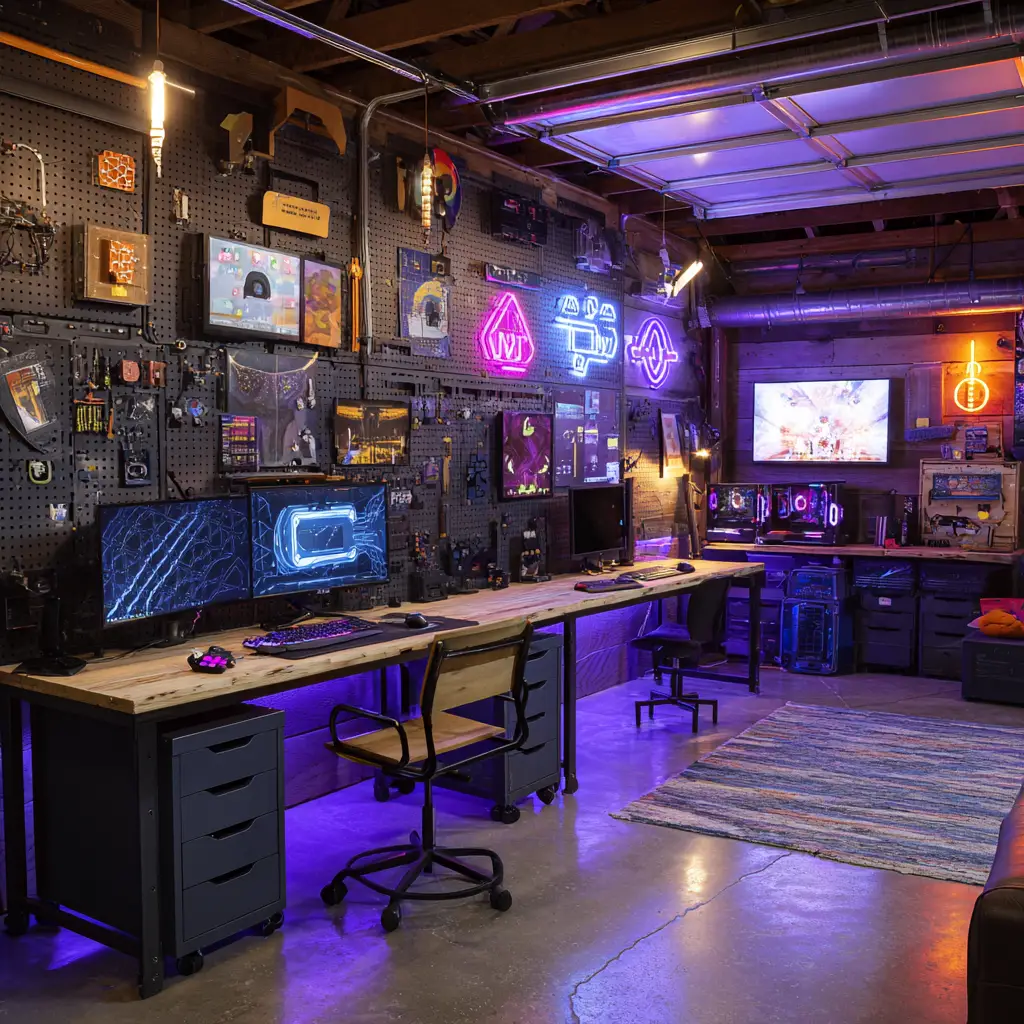
16. DIY Snack Bar
Use a small shelf or bar cart with healthy, easy-to-grab snacks like trail mix, crackers, fruit cups, and granola bars. Keep a mini fridge stocked with water, juice boxes, and yogurt. Teach kids how to portion snacks and clean up. It encourages independence and adds a fun café feel to the space.
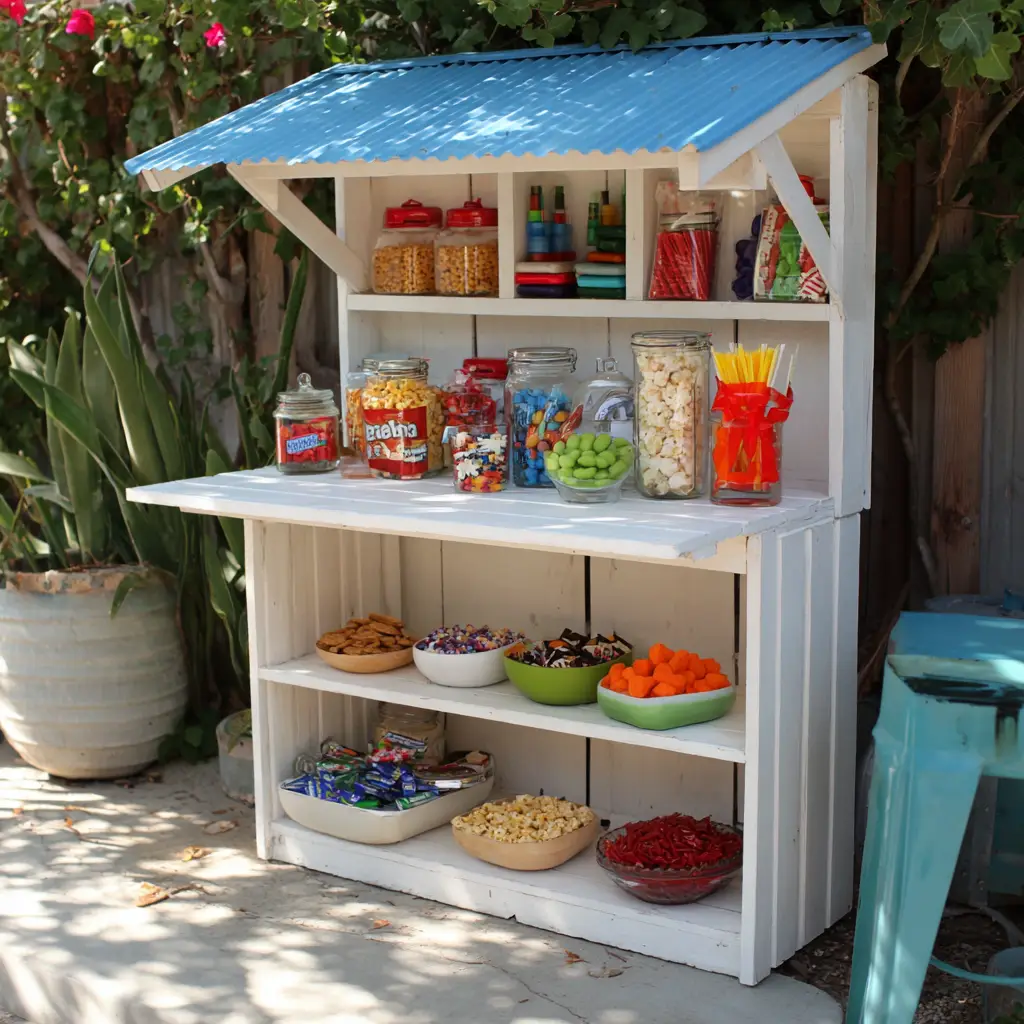
17. Sensory Play Station
Create sensory bins filled with rice, kinetic sand, water beads, slime, or pasta. Add scoops, measuring cups, small toys, and textured tools. Keep a splash mat or tarp underneath and have towels ready for cleanup. Sensory play is calming and stimulating, especially for younger kids or those with sensory needs.
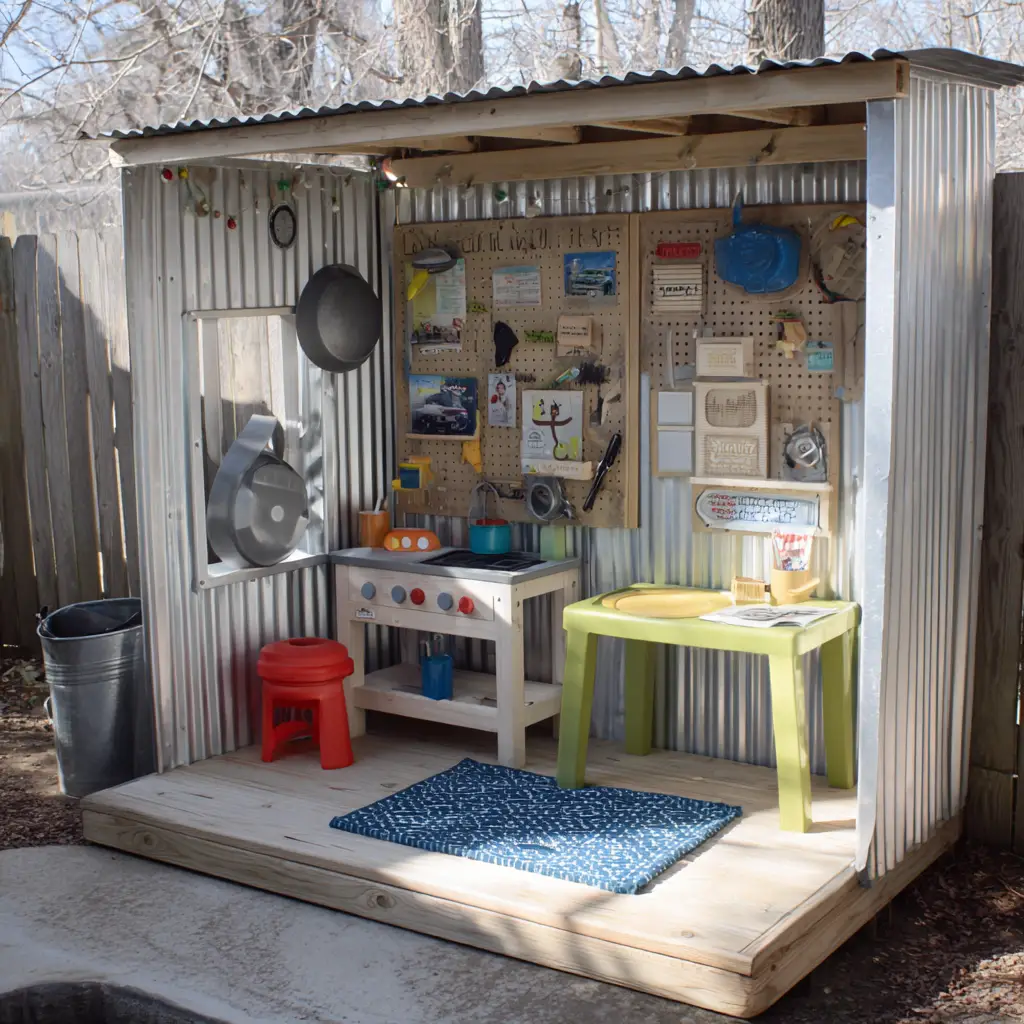
18. Themed Dress-Up Corner
Install a child-sized clothing rack and use labeled bins for props and accessories. Include mirrors, hats, masks, and wigs. Choose themes like pirates, fairies, or explorers. It helps children explore new characters and builds emotional intelligence through storytelling and pretend play.
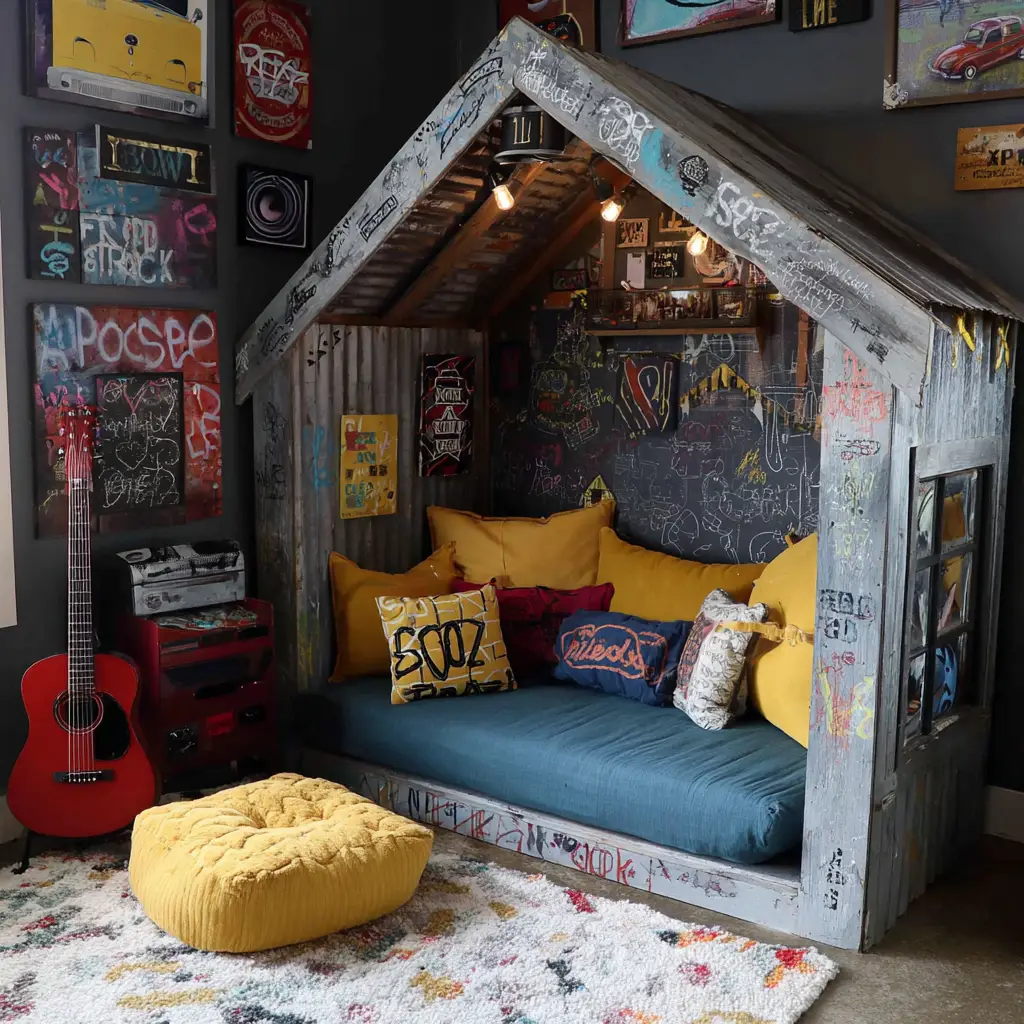
19. Gardening Zone
Set up a gardening station with small pots, soil, seeds, and tools. Teach your kids how to plant, water, and monitor growth. Start with herbs or fast-growing vegetables like radishes or lettuce. Use chalkboard signs or plant markers to label their projects. It teaches responsibility and patience while connecting them to nature.
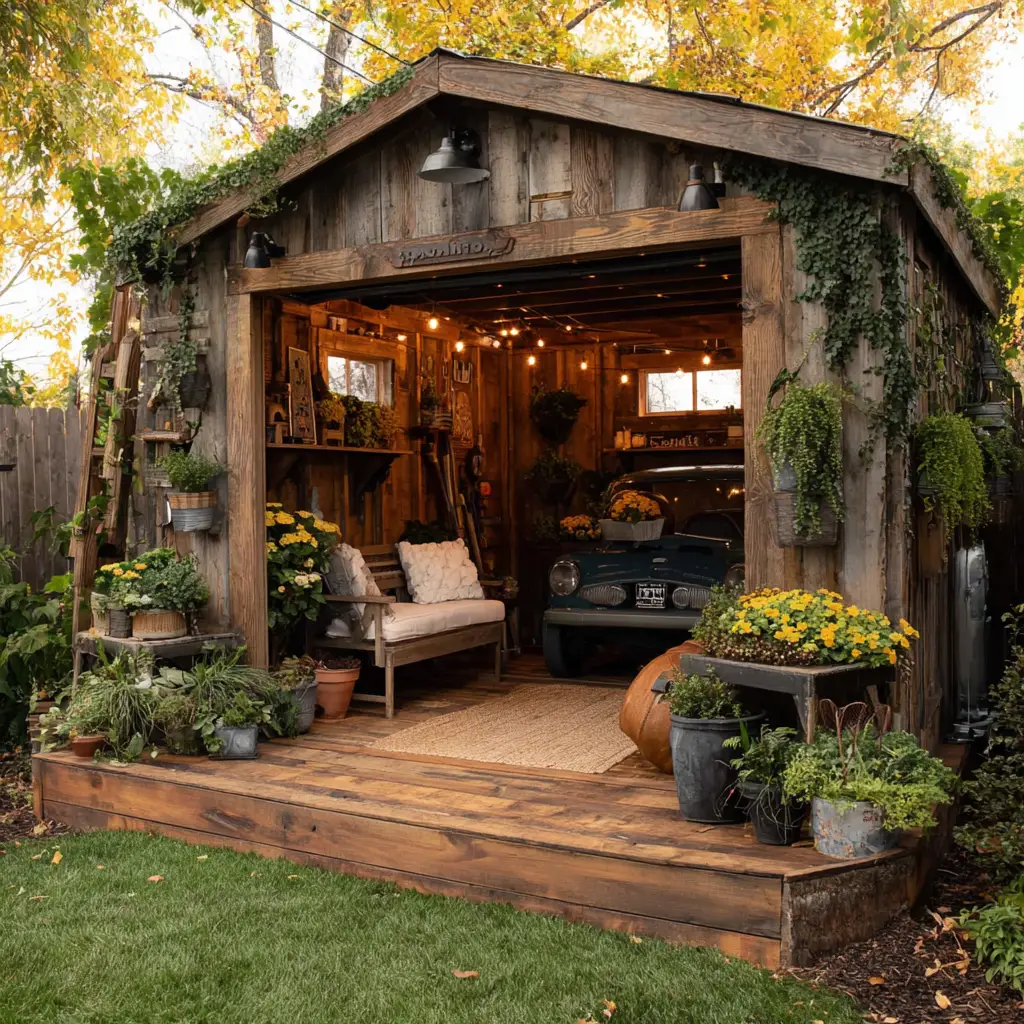
20. Homework and Study Corner
Design a quiet, focused area with a desk, a lamp, and all the school essentials like notebooks, pens, rulers, and a calendar. Add a corkboard or whiteboard for tracking assignments. Keep the space clutter-free and tech-ready if they use a tablet or laptop for schoolwork. It gives them a distraction-free zone for productivity and self-discipline.
FAQs
How can I make a garage hangout safe for kids?
Start by clearing out all sharp tools, chemicals, and hazardous materials. Use outlet covers, secure cords, and ensure there’s proper ventilation and lighting. Soft flooring or rugs can reduce slips. Always supervise activities based on your child’s age and maturity level.
Do I need to insulate or heat my garage for year-round use?
Yes. If your garage isn’t already insulated, you’ll need to add insulation and a portable heater or fan to keep it comfortable in extreme weather. Rugs, curtains, and weatherstripping on the garage door can also help with temperature control.
How can I keep the garage organized with all these activities?
Use labeled storage bins, hanging shelves, pegboards, and clear containers to keep everything visible and tidy. Create a “clean-up routine” that becomes part of the fun. Rotate activities and only keep out what’s being used regularly to avoid clutter.
What’s the best age group for a garage hangout?
Garage hangouts can be tailored to any age—from toddlers with
Conclusion
Creating a DIY garage hangout for kids isn’t just about entertainment—it’s about building a space where imagination, learning, and connection can flourish. Whether your child is a budding artist, future engineer, energetic athlete, or daydreaming reader, there’s a corner in your garage that can be shaped around their unique personality and needs.
